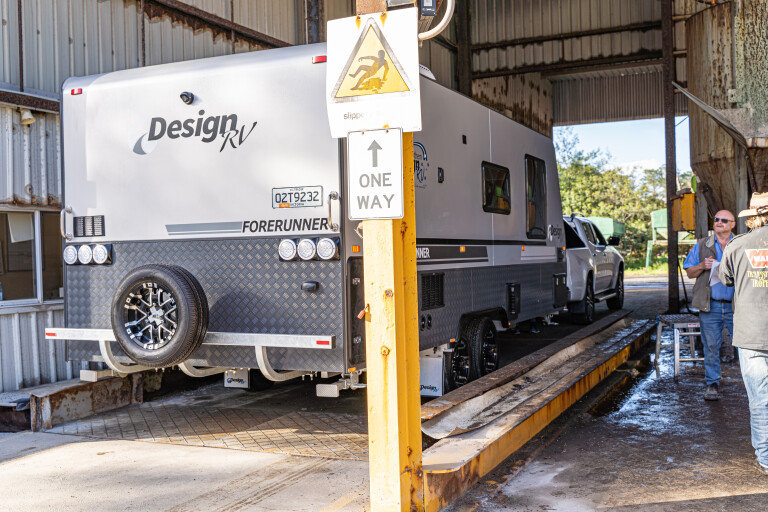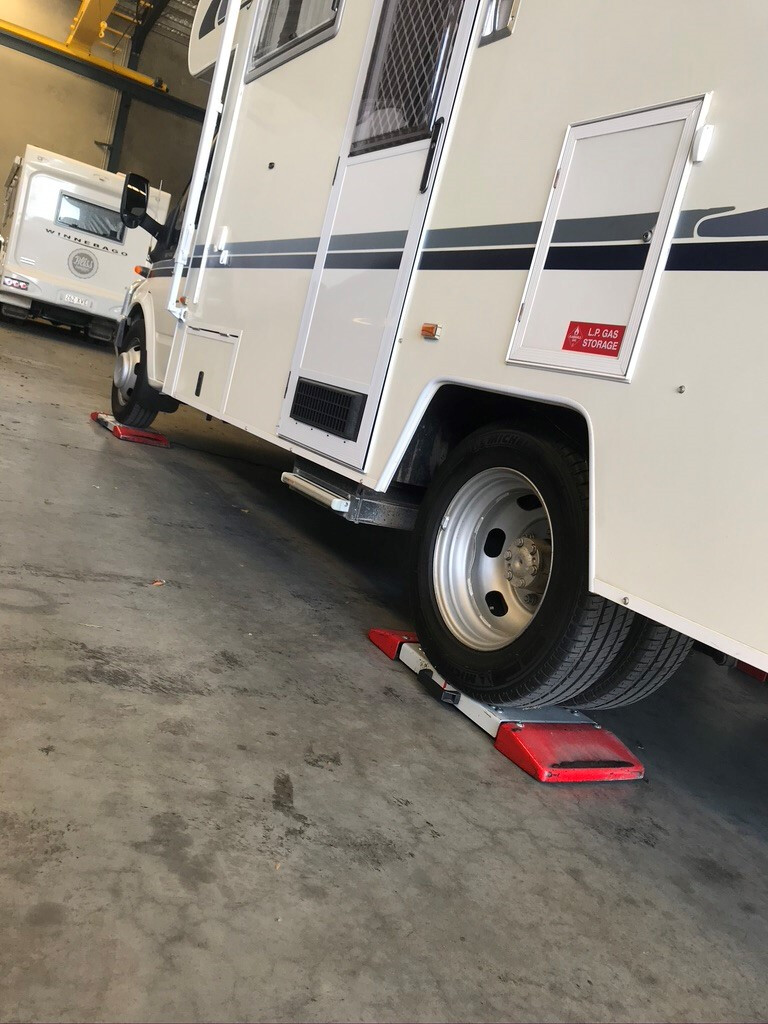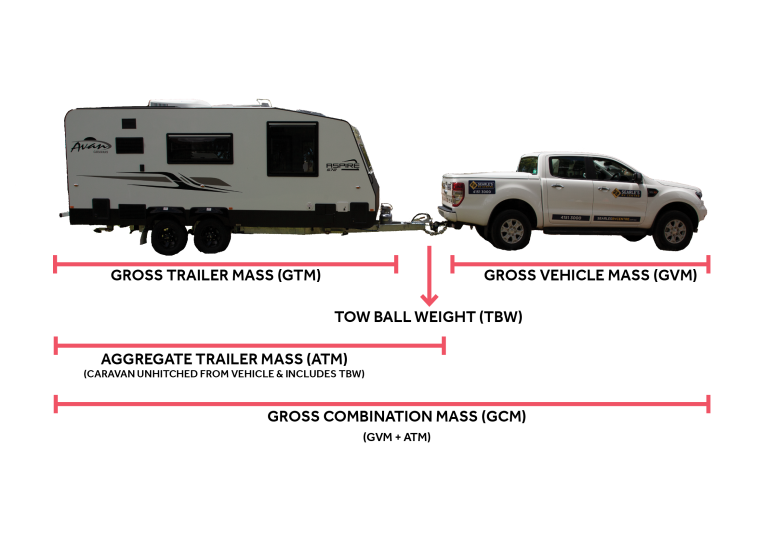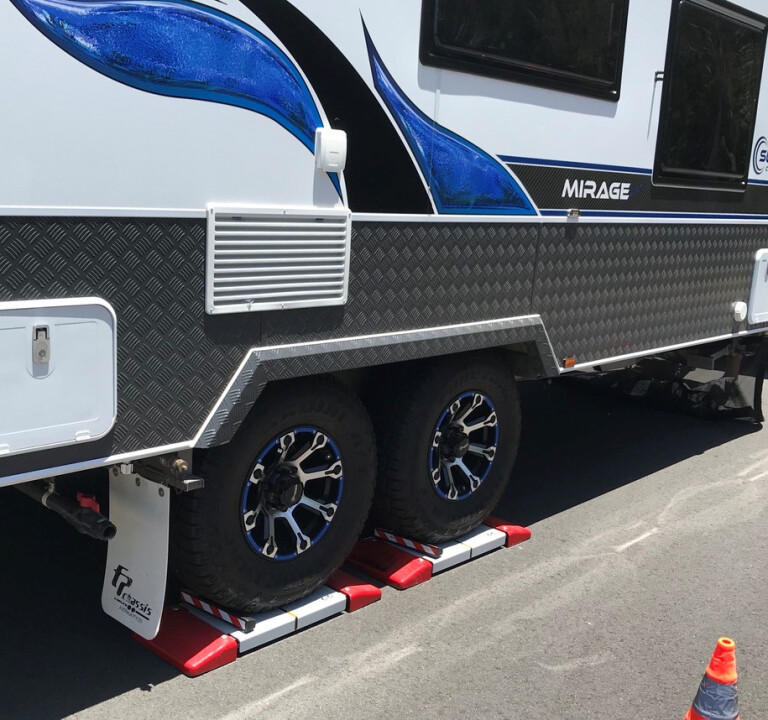
Being aware of your RVs’ weight is more important than ever, yet it continues to be overlooked. Here’s a quick guide on why it is so essential.
Understanding campervan and motorhome weight
Understanding your motorhome weight is simple yet important. Keeping your vehicle within its weight limits will ensure you have a safe and stable vehicle on the road. You also need to know vehicle weight to ensure you have the correct licence for your chosen RV.
There are three weights to consider: tare weight, GVM and payload. You can check your vehicle's compliance plate to find tare and GVM. Deduct the tare weight from the GVM to calculate your payload.
Please note, it is best to get your vehicle checked at a weigh bridge or portable weigh station to ensure you know the correct vehicle weight. Make sure you pack all your gear and take your passengers with you for the weigh-in.
If you are looking to tow a trailer or secondary car behind your motorhome, you will also need to take into account the motorhome’s towing capacity, tow ball mass and gross combined mass (GCM) as stipulated by the manufacturer.

Understanding caravan and camper trailer weight
Getting your caravan or camper trailer combination weights right is imperative as both the total weight and the way it is distributed affects both towing stability and braking ability. Plus, you do not want to get in trouble with the police, affect your vehicle warranty or have your insurance denied.
Calculating your vehicle weight can be cumbersome, and the simplest and safest thing to do is take your vehicle combination, loaded with all your gear and passengers, to a weigh bridge, or have a portable weigh station come to you.
If you are new to RVing and shopping for your first combination, it is important to do your research to make sure you consider the tow vehicle capacities, trailer weight and payload requirements.
Manufacturers will specify some key weight limits. These can be found on the vehicle or trailer compliance plates, or check your owner’s manual.
You need to ensure your vehicle's towing capacity (braked) is higher than your gross trailer mass. From here, there are four weight limits you need to check that you are within limits:
- Aggregate Trailer Mass – ATM
- Tow Ball Weight – TBW
- Gross Vehicle Mass – GVM
- Gross Combined Vehicle Mass – GCM
The ATM will be printed on your trailer’s compliance plate, and the other three will be on your vehicle’s compliance plate and/or in the owner’s manual. You will need to have your vehicle weighed to ensure you have not exceeded your payload.

Understanding fifth-wheeler weight
When calculating the towing capacity of a fifth-wheeler you must consider the gross vehicle mass (GVM) and the gross combined mass (GCM). For example: GCM 6000kg – GVM 2950kg = fully laden trailer cannot exceed 3050kg.
The usual practice is to have 20 per cent of the fifth-wheeler weight carried by the tow vehicle; however, it must not exceed the legal payload allowance of the tow vehicle. Payload is calculated by subtracting the tare from the GVM.
There are many benefits of having a fifth-wheeler, including towing stability and a larger area in the RV; however, these will impact the payload of your vehicle. Make sure you do the maths before purchasing as you do not want to have a great vehicle but no payload left.
Understanding slide-on weights
If you are interested in getting a slide-on, you are going to need to know your vehicle payload. Check your vehicle's compliance plate or owner’s manual to find out your gross vehicle mass (GVM) and tare weights. Payload is calculated by subtracting the tare weight from your gross vehicle mass.
The payload of your vehicle includes all the optional extras your vehicle may have such as the bull bar, roof racks, LED lights, winch, UHF, and awning. You will also need to include the weight of your fuel and passengers of your vehicle. Then you have the weight of your slide-on and all your gear (camping chairs, cookware, etc.) and personal items (food, clothing) and maybe you might also have a push bike and fishing gear.
If you already have a slide-on set up, pack all your gear and passengers and head to a weigh bridge and check your GVM.
If you are looking to purchase, make sure you do your research on your vehicle capacity, slide-on weight and inclusions, and then everything you need to take with you to make sure it’s a viable option for you.
Weight glossary
Tare weight
Tare Weight represents the unladen weight of the vehicle including all engine fluids and a 10-per-cent fuel reserve. It is important to note that this may not include dealer inclusions or optional fittings at the time of purchase.
Gross vehicle mass (GVM)
Gross vehicle mass is specified by the manufacturer and is the maximum legal loaded mass of the vehicle. It includes the weight of the car, fuel, vehicle payload, all passengers, plus tow ball weight if towing.
Gross combination mass (GCM)
Gross combination mass is the total permissible weight of the loaded vehicle and caravan together and is specified by the manufacturer.

Aggregate trailer mass (ATM)
Aggregate trailer mass is the maximum total weight of the caravan or camper trailer. This is specified by the manufacturer and includes the tow ball weight.
Payload
Payload refers to the total weight you can add to your vehicle. This includes fresh and wastewater, gas bottles, personal items, clothes, bedding, food, etc. It can also include optional extras and aftermarket modifications such as awnings and driving lights. If you are towing, your tow ball weight must be included in your vehicle’s payload. You can calculate your caravan or camper trailer payload by subtracting the tare mass from the aggregate trailer mass (ATM).
Tow ball weight
Tow ball weight, also referred to as tow ball mass, is the weight pushing down on the tow ball by the coupling of the RV being towed.
More information
rvSafe is designed to increase road safety awareness and education specific to the RV industry. The project is funded through the Federal Government’s Road Safety Awareness and Enablers Fund and is proudly supported by the Campervan & Motorhome Club of Australia (CMCA).
Find out more at: rvSafe.com.au and cmca.net.au


COMMENTS